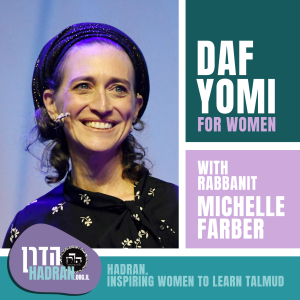
Pictures
How do you know that the "fruit of the hadar tree" mentioned in the Torah is an etrog? The gemara brings some answers. Why is an etrog of orla (fruits from the first three years of a tree) prohibited? Is it because it cannot be eaten or because it has no monetary value, meaning it is not considered the property of the owner (since it is prohibited to benefit from it)? All agree that it needs to be eaten but there is a debate regarding whether or not it also needs to be the financial property of the owner. The case where they would disagree is regarding the second tithe that is permissible to eat in Jerusalem, but there is a dispute between Rabbi Meir and the rabbis as to whether it is considered the property of God (R. Meir) or the property of its owner (rabbis). There are a few other laws that require it be considered the financial property of the owner and according to Rabbi Meir one would not be able to fulfill his mitzva of eating matza with second tithe produce and also would not be obligated to separate challa from a dough made from second tithe flour. From where are these laws derived? The gemara goes on to explain the reason for the other disqualifications for etrog mentioned in the mishna – from impure truma, pure truma, demai according to Beit Shamai, and second tithes in Jerusalem.
More Episodes
 2024-03-28
2024-03-28
 2024-03-27
2024-03-27
 2024-03-26
2024-03-26
 2024-03-24
2024-03-24
 2024-03-22
2024-03-22
 2024-03-22
2024-03-22
 2024-03-21
2024-03-21
 2024-03-20
2024-03-20
 2024-03-19
2024-03-19
 2024-03-18
2024-03-18
 2024-03-17
2024-03-17
 2024-03-15
2024-03-15
 2024-03-15
2024-03-15
 2024-03-14
2024-03-14
 2024-03-13
2024-03-13
 2024-03-12
2024-03-12
 2024-03-08
2024-03-08
Create your
podcast in
minutes
- Full-featured podcast site
- Unlimited storage and bandwidth
- Comprehensive podcast stats
- Distribute to Apple Podcasts, Spotify, and more
- Make money with your podcast
It is Free
- Privacy Policy
- Cookie Policy
- Terms of Use
- Consent Preferences
- Copyright © 2015-2024 Podbean.com





